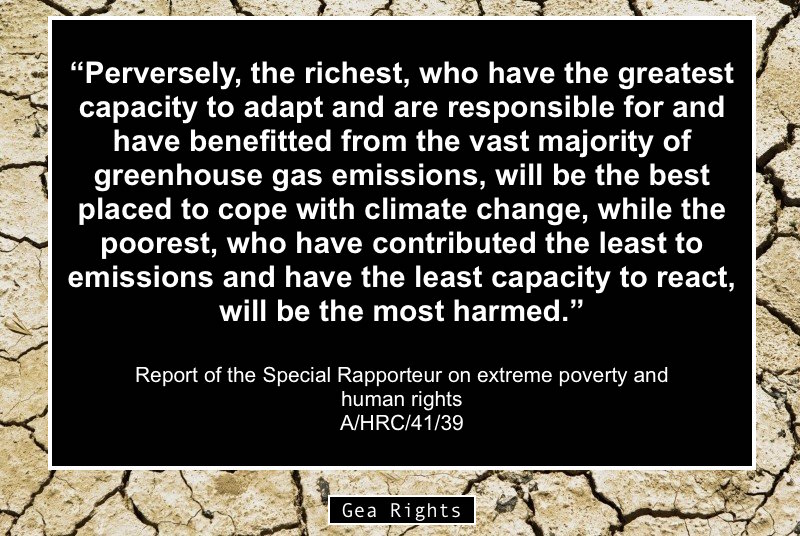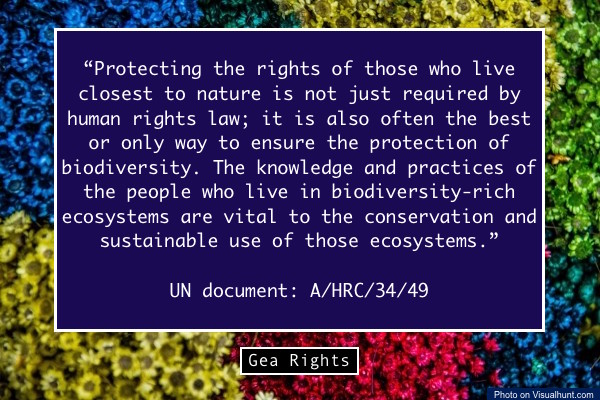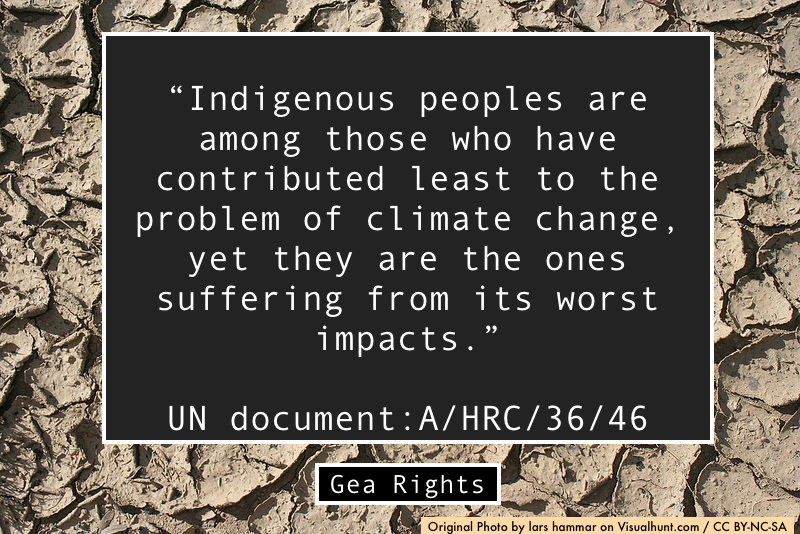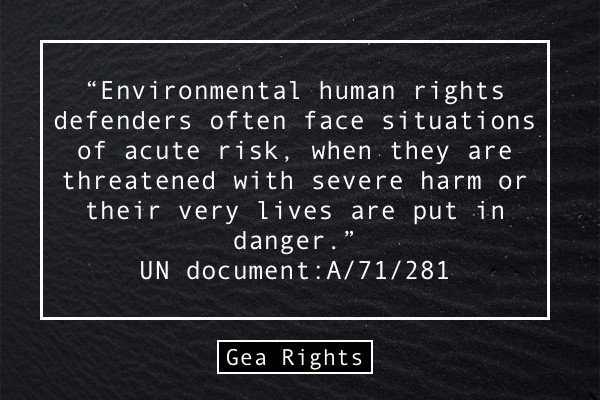In the last few years, the legal systems of several countries have introduced some important innovations, resulting in the recognition of the rights of ecosystems and their legal subjectivity. The 2008 Constitution of the Republic of Ecuador has been the first one to introduce the rights of Nature or “Pacha Mama”.[1] In 2009, Mother Earth also found space in the Constitution of the Plurinational State of Bolivia[2], and in 2010, in the Bolivian Law 071/2010 “Ley de Derechos de la Madre Tierra”.[3] Ordinary laws, local regulations and court judgments have introduced the same concepts in a growing number of countries.[4]
The cultural substrate of these innovations is usually the Indigenous cosmovision that considers humans as a part of a greater system, and Mother Earth as a living being. The connection with the land is a fundamental aspect of the Indigenous identity and culture. The land, in fact is not simply considered as a commodity or a mean of production, but rather a part of the existence that connects all living beings.[5] Rich in spiritual, cultural, and political meanings, land allows the daily interaction between humans and non-humans, in a holistic interpretation of the world.[6]
As stated by Watts:
“Our truth, not only Anishnaabe and Haudenosaunee people but in a majority of Indigenous societies, conceives that we (humans) are made from the land; our flesh is literally an extension of soil. The land is understood to be female: First Woman designates the beginning of the animal world, the plant world and human beings. It is the femininity of earth itself that institutes all beings as literal embodiments of localized meanings.”[7]
As a result, the relationship between Indigenous peoples and the Earth is characterized by an obligation to protect and safeguard.[8]
In the words of Clarkson, Morrissette and Régallet:
“[For Indigenous peoples] the consequences of this relationship with the earth and its gifts are a profound, intimate and respectful relationship with all living things and a deep reverence for the mystery of life. In our ways, spiritual consciousness is the highest form of politics. When we begin to separate ourselves from that which sustains us, we immediately open up the possibility of losing understanding of our responsibility and our kinship to the earth. […] We can view the things of the earth as ‘resources’, to be used for our own benefit. We can take without thought to the consequence. We can trick ourselves into believing that our life and the life of others have improved. While doing all of this, we can quite readily forget that at some point in time the earth will no longer be able to give and we will no longer be able to take. As the separation between human beings and the earth widens so the chances of our survival lessen.”[9]
According to the Indigenous cosmovision, Earth is not a passive entity merely providing resources for humans’ endless needs.[10] On the contrary, humans have a responsibility to maintain a balance between their needs and Mother Earth’s ability to provide.[11] In spite of the attempts that have taken place for centuries to assimilate the native into the settlers’ cultures,[12] Indigenous peoples still consider human beings as connected and interdependent to the rest of nature, and their legal systems include “reciprocal rights and responsibilities between humans and other species, as well as between humans and non-living elements of the environment”.[13]
This perspective is in antithesis with the prevalent Western approach, that considers nature as a set of natural resources for the development of humanity and is based on the separation between nature and society.[14] Escobar uses the concept of “capitalist nature” to describe the relationship with nature that first emerged in Europe after the Renaissance and took shape with Capitalism and the “modern epistemic order” during the late18th century.[15] Modernity is characterized by the affirmation of nature as a resource to be used, where “Man” becomes the “anthropological structure and the foundation of all possible knowledge” and nature is gradually incorporated in the realms of governmentality and commodity.[16]
While the Indigenous approach towards nature is generally considered biocentric, or Earth-centered, because it gives to nature an intrinsic value and spiritual dimension, the Western one is considered anthropocentric, as it aims to protect the environment solely in order to preserve humans’ quality of life.[17]
In the next post we will analyze the emergence of Earth Jurisprudence.
[1] Constitution of the Republic of Ecuador (2008)
[2] Constitution of the Plurinational State of Bolivia (2009)
[3] Law 071/2010, “Ley de Derechos de la Madre Tierra” (2010)
[4] UN Programme Harmony with Nature http://www.harmonywithnatureun.org/rightsOfNature/ (accessed 2 June 2020)
[5] David Throsby, Ekaterina Petetskaya, “Sustainability Concepts in Indigenous and Non-Indigenous Cultures”, in International Journal of Cultural Property, Vol. 23, No. 29 (2016), p. 124
[6] Ibid.
[7] Vanessa Watts, “Indigenous place-thought & agency amongst humans and non-humans (First Woman and Sky Woman go on a European world tour!)”, in Decolonization: Indigeneity, Education & Society Vol. 2, No. 1 (2013), p. 27
[8] David Throsby, Ekaterina Petetskaya, “Sustainability Concepts in Indigenous and Non-Indigenous Cultures”, op. cit., p. 124
[9] Linda Clarkson, Vern Morrissette and Gabriel Régallet, Our Responsibility to The Seventh Generation – Indigenous Peoples and Sustainable Development International (Winnipeg – Institute for Sustainable Development, 1992), p. 13 https://www.iisd.org/pdf/seventh_gen.pdf (accessed 2 June 2020)
[10] Ibid. p. 21
[11] Ibid. p. 22
[12] Boarding schools (also called Residential Schools) were one of the means used “to take the Indian out of the child”. See Andrea Smith, Indigenous Peoples and Boarding Schools: A comparative study, prepared for the Secretariat of the United Nations Permanent Forum on Indigenous Issues, https://www.un.org/esa/socdev/unpfii/documents/IPS_Boarding_Schools.pdf, (accessed 20 June 2020)
[13] David. R. Boyd, The Rights of Nature – A Legal Revolution That Could Save the World (ECW Press, 2017), pos. 278 (digital format)
[14] Arturo Escobar, “After Nature: Steps to an Antiessentialist Political Ecology”, in Current Anthropology, Vol. 40, No. 1 (February 1999), published by: The University of Chicago Press on behalf of Wenner-Gren Foundation for Anthropological Research, p. 6
[15] Ibid. p. 6
[16] Ibid. pp. 6-7
[17] Suzanne C. Cagnon Thompson, Michelle A. Barton, “Econcentric and Anthropocentric Attitudes toward the Environment”, in Journal of Environmental Psychology, No. 14, (1994), p. 149
Photo Credit: blavandmaster on Visualhunt







Leave a Reply